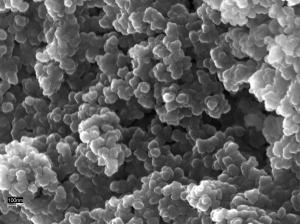The aim of this study was to prepare and describe a series of new materials of the aerogel type as possible adsorbents of benzene, toluene and xylene (BTX)

A research team from the University of Granada succeeded in developing the most effective material known today for removing pollutants such as benzene, toluene and xylene - solvents common in the hydrocarbon industry and emitted from vehicles moving in cities. The world-wide problem of exposure to aromatic hydrocarbons was mainly focused on benzene, which is considered a dangerous substance for humans and even carcinogenic, even in low concentrations.
This material is a monolithic carbon aerogel that has the advantage not only of trapping these pollutants but also its simple cycle that allows it to be used in several cycles [Wikipedia: "Aerogel is part of a family of materials based on the element Zoran - silicon, And it is a strong and light material, most of which is between 90% and 98% air."
This research was carried out by David Fairén Jiménez from the Department of Inorganic Chemistry at the University of Granada, and was directed by the two researchers Carlos Moreno Castilla and Francisco Carrasco Marín. The aim of this study was to prepare and describe a series of new materials of the aerogel type as possible adsorbents of benzene, toluene and xylene (BTX). Research on the removal of volatile organic compounds from sources of modern man - urban transport, solvents, industry, etc. - such as BTX, is extremely important because these substances are highly polluting.
In order to keep these pollutants away, "it is necessary to use materials with the greatest content of micropores, where the adsorption reaction of the pollutants takes place - but these pores must have an appropriate size and an efficient spatial arrangement. So we were able to achieve a high level of efficiency in removing these solvents after the saturation of the material", says researcher David. In addition to this, the design of the adsorbent substrate must allow enough physical contact to remove the compounds and at the same time prevent a drop in pressure. Finally, the material used must withstand mechanical forces such as vibrations and vibrations. The researcher notes that "the single-assembly carbonaceous air-solids, which are the materials we worked with, satisfy all these requirements."
This study also provides research methods for examining the samples of the porous materials by comparing known characterization methods such as: gas adsorption and small-angle X-ray scattering. These methods provide information about the properties of these materials and the physical conditions of the pollutants contained in them. The researchers were able to develop materials with better properties than other known materials capable of removing pollutants such as these three solvents. The outstanding advantage of these materials is their ability to absorb a considerable amount of polluting compounds and the possibility of recycling them afterwards. The design of these materials, made possible by directed synthesis, makes them useful in situations of gas flow at high pressure without reducing the effectiveness of the adsorbent material.
According to the researchers from Spain
